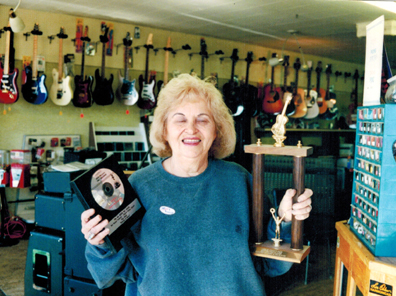The nonprofit magazine In These Times recently published an in-depth article about uranium miners in the Route 66 town of Grants, New Mexico.
The mines operated in Grants and Church Rock, New Mexico, from the 1950s to the 1980s. Many miners contracted cancer and other diseases from radiation exposure. The federal government under the Radiation Exposure Compensation Act paid more than $750 million in restitution on nearly 8,000 claims from those workers.
However, the law covered only workers employed at the mines before 1972. The mines continued operating for another 15 years or so, and those who worked there — and their families — continued to get sick.
The article contains a lot of good information, and it deserves to be read in full. But here are a few highlights:
— The uranium miners literally brought their work home with them through the uranium and yellowcake dust on their clothing, exposing their spouses and children. A survey of more than 400 wives of those workers found 40 percent of them reported miscarriages, stillbirths or children with birth defects.
— Companies professing ignorance of the effects of uranium mining didn’t wash, because health problems with miners were documented as far back as 1546, along with scientific studies during the 1930s and ’40s.
— Better safety standards might have protected the miners after 1972. However, workers said inspections by the Mine Safety and Health Administration were spotty to nonexistent. Only 14 percent of workers employed after 1971 said their work areas had adequate ventilation to prevent cancer-causing radon gas.
— In the uranium mills, workers were given just one paper dusk mask per month, and it usually became clogged after one shift. Ventilation and dust-control system in the mills also were deemed inadequate.
The article concludes with this about Grants:
Grants is the quintessential boom town, post-boom. Now, the best jobs are in the prisons. Along its main street, a stretch of Route 66, there are almost as many weed-infested lots as there are occupied buildings. A half-mile stretch contains six payday loan companies—four in one block. A few large neon signs beckon people to buildings that no longer exist. An abandoned gas station has a large sign advertising Marlboro for $1.69 a pack. Lucero says that in its prime, Grants had “lots and lots of people. … The restaurants were full all the time, people [were] buying cars and houses.” But the streets are mostly deserted now. Asked if his friends and family have moved away, he answers, “No. Most of them died because of cancer.”
The Post ’71 Uranium Workers Committee is working to get surviving workers and their families the compensation.
(Image from the New Mexico Mining Museum in Grants by edmj via Flickr)
